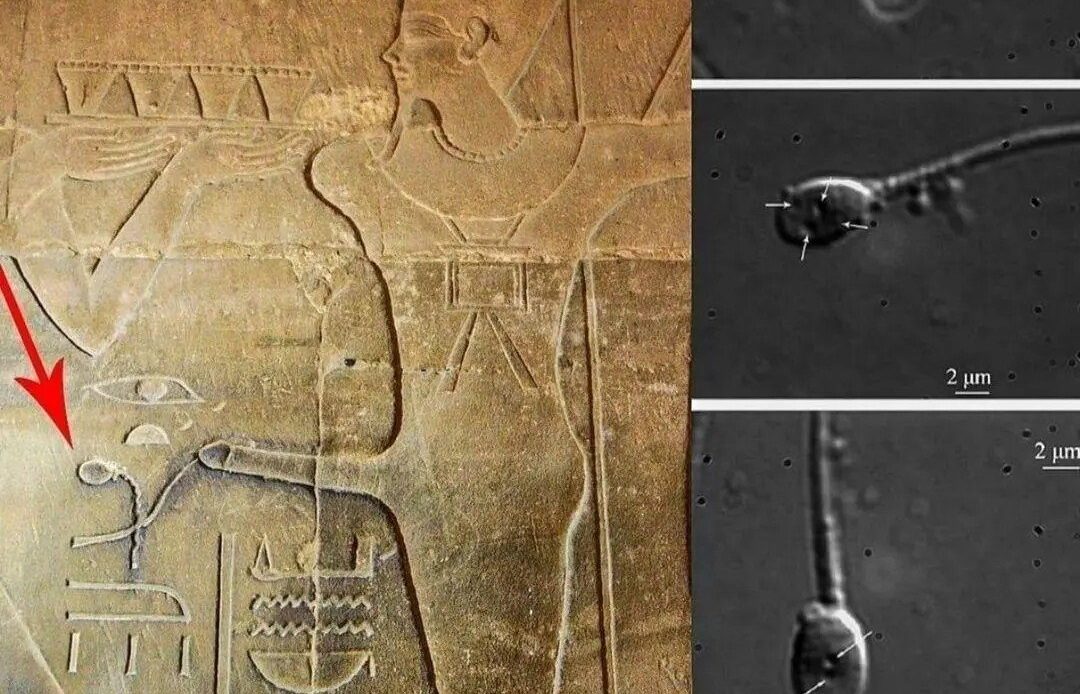Although the ancient Egyptians lacked microscopes, their observations and deductions stemmed from careful observation and experimentation. Here are the methods they likely used:

1. **Observation of Animal Behavior**
Egyptians closely observed animals during mating and reproduction, which helped them understand the connection between semen and the birth of offspring. They likely extrapolated these findings to human reproduction.
2. **Anatomical Studies**
Evidence suggests that Egyptians performed dissections, both on animals and possibly humans, to study internal organs and bodily functions. This practice could have provided insights into reproductive anatomy, including the male contribution to fertility.

3. **Medical Papyri and Remedies**
Texts like the **Ebers Papyrus** and the **Kahun Gynaecological Papyrus** discuss fertility, conception, and related issues. These documents indicate that the Egyptians had a basic understanding of the reproductive system, even without direct visualization of sperm.
4. **Symbolic Interpretations**
Egyptians often used symbolic and metaphorical language to describe bodily processes. For instance, they may have likened sperm to “life-giving water,” a comparison that aligns with their agricultural dependence on the Nile River.
#### **The Role of Fertility in Egyptian Culture**

Fertility was central to Egyptian life, influencing their medicine, religion, and daily practices. The ability to reproduce was seen as essential for maintaining the cosmic order, and infertility was often attributed to divine displeasure or spiritual imbalance. Some key aspects include:
1. **Fertility Rituals and Offerings**
Egyptians performed rituals and made offerings to fertility gods and goddesses, such as **Min** and **Hathor**, to ensure successful conception. These rituals underscore their understanding of the importance of male and female contributions to reproduction.
2. **Medical Treatments for Infertility**
Ancient Egyptian medical texts describe treatments for infertility, some of which targeted male health. These remedies often involved herbal concoctions, dietary changes, and spiritual practices aimed at enhancing reproductive capabilities.
#### **Mythology Meets Medicine**
The intersection of mythology and medicine is particularly evident in ancient Egyptian beliefs about sperm. For example:
– **The Creation Myth of Atum**
According to myth, Atum produced the first deities by ejaculating into his hand and using his semen to create life. This story not only reflects their reverence for semen as the essence of life but also hints at an early recognition of the male role in reproduction.
– **Osiris and Isis**
In another myth, the goddess Isis resurrects Osiris and conceives their son, Horus, using his preserved sperm. This narrative demonstrates an awareness of the importance of sperm even in the absence of physical intercourse.
#### **Comparisons to Modern Understanding**
While the ancient Egyptians lacked the scientific tools we have today, their observations and interpretations were strikingly advanced for their time. Modern science has confirmed many aspects of reproduction they speculated on, even if their explanations were rooted in mythological or symbolic frameworks.
For example:
– Their emphasis on semen as life-giving aligns with our understanding of sperm’s role in fertilization.
– Their recognition of male and female contributions to reproduction parallels the modern concept of gametes (sperm and eggs).
#### **Legacy of Egyptian Knowledge**
The ancient Egyptians’ understanding of sperm and reproduction has left a lasting legacy. Their medical texts influenced later civilizations, including the Greeks and Romans, who expanded on Egyptian knowledge. Today, their work serves as a reminder of humanity’s enduring quest to understand the mysteries of life.
#### **Ancient Wisdom, Modern Fascination**
The ancient Egyptians’ insights into sperm and reproduction are a testament to their ingenuity and curiosity. Without modern microscopes, they relied on observation, mythology, and experimentation to build a framework for understanding the processes of life. While their conclusions were not always scientifically accurate, their efforts laid the groundwork for future discoveries and remain a source of fascination for historians and scientists alike.
